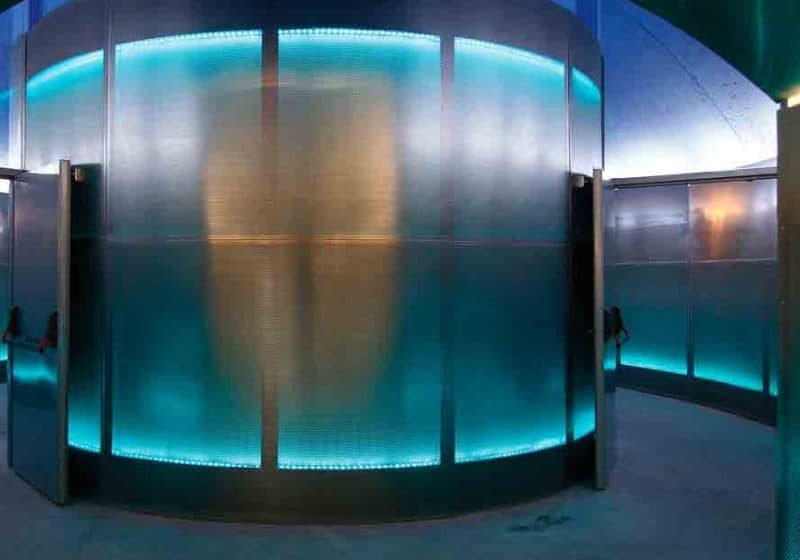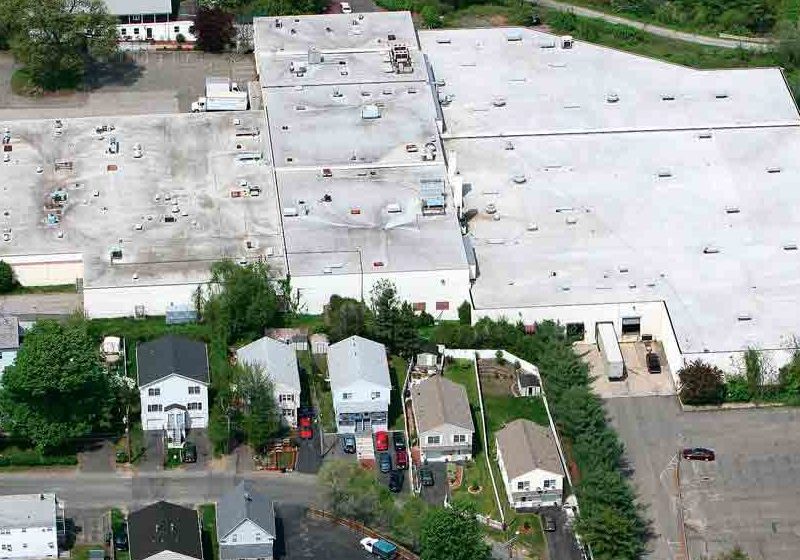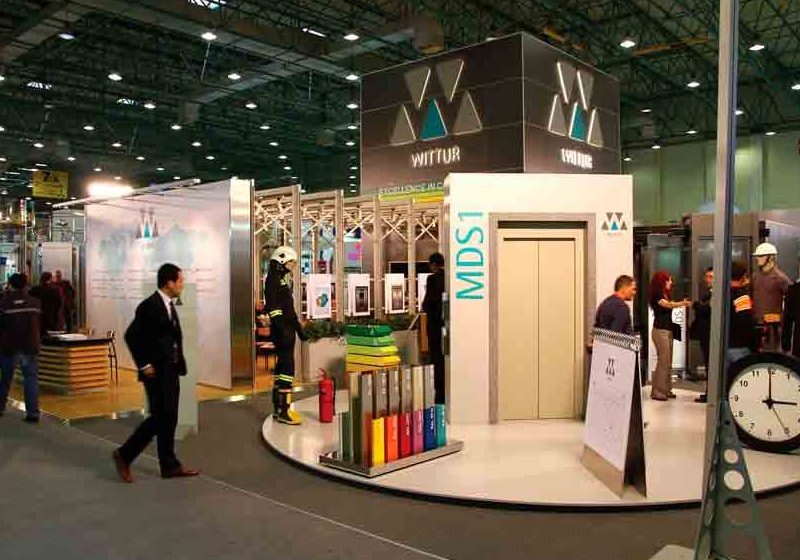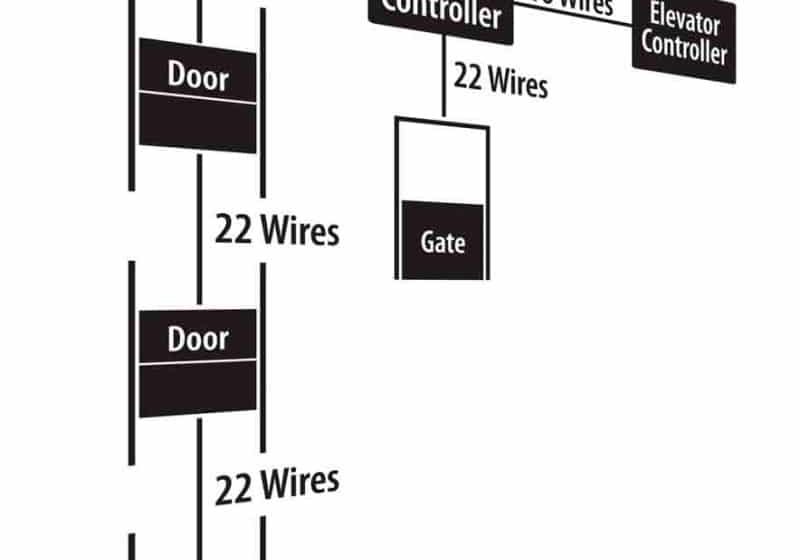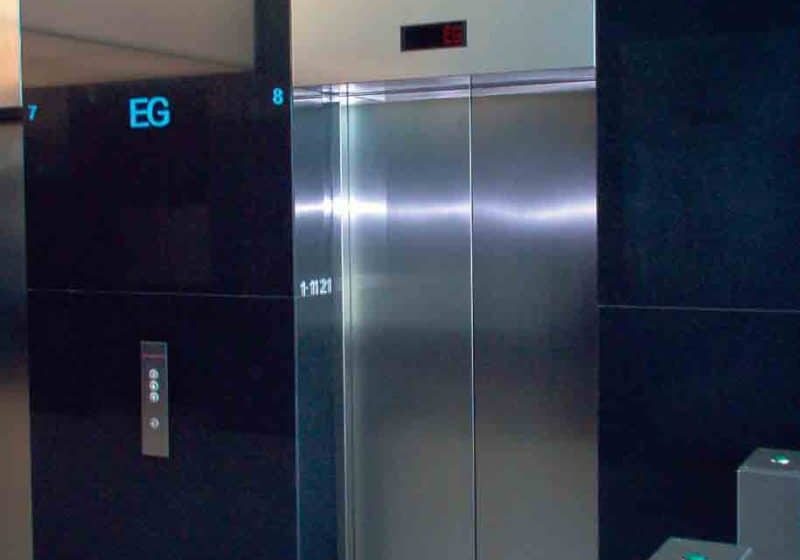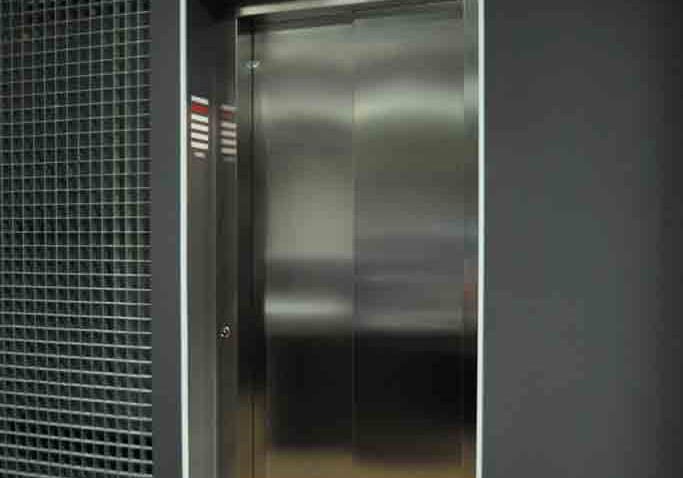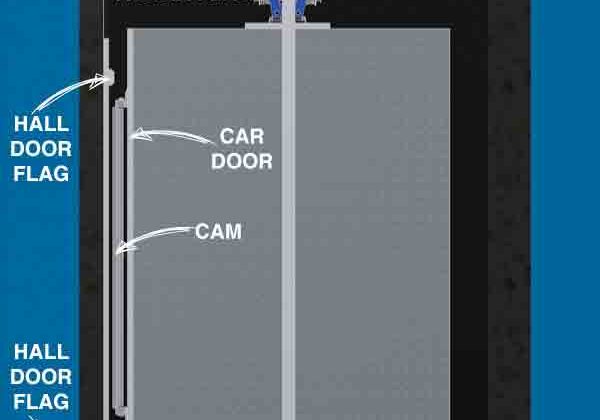Abolishing Pit and Head-room: It’s Possible Now More than Ever Before
Feb 1, 2012
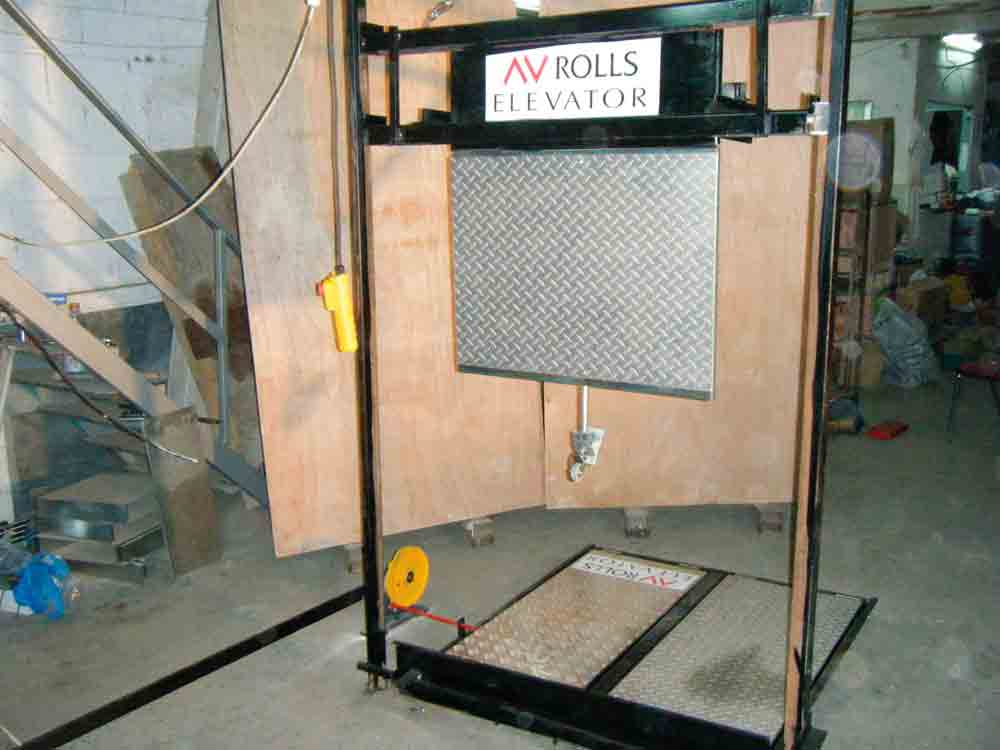
A patent-pending solution for an eleva-tor with a reduced pit depth and over-head, which increases safety by creating a temporary refuge space to prevent crushing, is presented.
This article presents the reader with a patent-pending solution for an elevator with a reduced pit depth and reduced overhead, which increases elevator safety by creating a temporary refuge space to prevent crushing from above and below the elevator car.
Refuge Spaces Are Mandatory, but Why Do We Need Them?
The purpose of the elevator pit is to create a safety space below the elevator car, and the purpose of the headroom is to create a safety space above it. Both spaces are intended to protect a person inside from being crushed and to function as a refuge space. In the absence of such refuge spaces, in the event of a person being below or above a moving car without the ability to stop, its movement could result in a lethal crushing accident.
The Problem of Refuge Spacing The Human Angle
Judging from accident reports, I conclude that the traditional pit and overhead do not provide absolute protection. Each year in the U.S., 30 people die and more than 17,000 are wounded as a result of elevator accidents. Every elevator standard calls for minimum safety spaces that are not always possible to satisfy. The size and dimensions of the pit, as defined by elevator standards, are minimal and hardly make it possible to function as an escape space to protect a person located within. The small space designed to provide protection does not provide free movement that would allow an instinctive reaction in the event of danger.
“Free spaces,” as defined by European and U.S. standards, call for minimal dimensions: EN 81 requires a box with dimensions of 56 X 60 X 100 cm, and ANSI A17.1 requires a box with dimensions of 60 X 1,200 X 60 cm or 45 X 90 X 107 cm. Those spaces intend to accommodate only one person; standards do not consider the presence of two persons.
A known solution for a pit in a shaft with small size dimensions is a side excavation that satisfies the requirement for an escape space, but such an excavation does not answer the real need for enabling escape. A person situated at the pit bottom of a working elevator, with a small physical distance between him or herself and the moving car, needs a minimum reaction time to respond to a dangerous state when it occurs –something that isn’t always provided when dealing with side excavations.
An additional reason to look for alternative safety solutions is the fact that some accidents are a result of falling into the elevator pit. In one of the more shocking U.S. accidents in 2009, a technician was killed when he descended into the elevator pit and was crushed by a car traveling downwards under normal operation mode, while he was on the pit ladder. From this accident, it can be concluded that being able to stop the car in time is very important for safety.
An investigation of accidents in which persons were located above or below the car shows that most lethal accidents occurred primarily when the elevator car was under normal control mode, rather than in inspection mode. This usually occurs when a single person is working alone. Some countries’ laws forbid workers from being alone at jobsites when car movement is placed under inspection mode.
Other Constraints
Sometimes, digging an elevator pit becomes an impossible task, either due to physical constraints (such as the presence of a gas main, major electric cable, tunnels or other occupied space) or legal constraints such as those imposed by preservation orders or the refusal of owners of adjacent premises to make more space available. Such problems can be encountered when a new elevator is added to an existing building, where the digging of the pit might conflict with the structure’s or building’s foundations or with water seepage into the elevator pit. Many old houses have a common basement or shelter under their stairwells that makes it impossible to dig a pit. In most cases, such constraints will prevent a new elevator installation.
The problem of headroom is expressed mainly when one wants to install an indoor elevator inside a structure without being required to break an existing ceiling. The problem is especially common in private homes and two-level apartments within a multilevel structure.
Consequences of Installation without an Elevator Pit and Headroom Refuge
The only problem I have encountered with the RCE solution has been with the car apron/toe guard. The European standard requires an apron that extends to about 80 cm, while the U.S. standard sets that length at 122 cm. It is obvious that such an apron cannot be used within a reduced elevator pit, which is only about 20 cm deep. The European standard allows a manually retracted and manually extended apron, or a manually retracted and automatically extended apron; in both cases, the standard requires that the car door be equipped with a locking device per EN 81-21 Section 5.8.2, a & b. Section C, however, allows a foldable apron that is self extending under normal operation and self retracting when the car reaches its lowest position; such an apron allows use of the car door without any locking device. This is the solution I suggest for the apron.
At last October’s Interlift in Augsburg, Germany, many elevator companies presented pitless elevators. It was almost amazing to see how the elevator industry is shifting to this technology as it did 10 years ago with the machine-room-less elevator. Nevertheless, I did not see a single apron that allows the use of the elevator without a locking device in the car door. (I actually opposed this solution, since I’m not convinced of the consequence of such a device in case of fire in the building, especially in the elevator shaft.)
My solution to this problem is a new invention that makes use of a self-extendable, self-extracting, self-locking and foldable apron, which is only about 20 cm high when fully folded. Whenever the car is lowered throughout the reduced pit floor, the apron collides with the shaft floor and is forced to make a rotary motion to fold up as the car moves downward to its minimum height of 20 cm. Because of its design, the apron is fully extended when the car moves upward and self locks to withstand the forces as required by the elevator standards.
Control over the extraction point/opening of such an apron when the car moves in the upward direction away from the pit floor level is performed by using a control switch that prevents further car movement beyond the next floor in case the apron does not extend back to its fully opened position. This solution allows:
- Elevator installation independent of physical or legal constraints
- A comfortable and safe working area above and below the car
- The ability to increase the safety level of the elevator technician independent of his or her training level or discipline
EN 81 Versus ANSI A17.1
Elevator standards require that every elevator has a means to prevent free falls of the car; the existence of such a device allows the passenger to enter with self confidence, regardless of its height above the ground. (That’s probably why we prefer a non-transparent car floor.)
ANSI A17.1 has an additional requirement for “Unintended Car Movement Protection” (UCMP). The requirement definition for this device/function is described in Section 2.19.2.2: “UCMP will detect any unintended car movement in either direction while a landing or car door is open and will stop and hold the car by applying the emergency brake.” In 2011, such a requirement was scheduled to become mandatory in EN 81 at the beginning of this year.
The RCE Solution
Traditionally, only the wall of the shafts are used for safety, as a protection against falling into the shaft from the outside, as shaft doors have protective means that electrically and mechanically prevent them from being open at any given time, when the car isn’t stationed directly behind them. Although protection is accomplished by using the shaft’s floor and ceiling, and the elevator safety gear according to the European Norm (EN) and the use of UCMP according to A17.1, the RCE solution consists of a movable pit floor and movable ceiling at the upper shaft end that both utilizes the existing safety-gear mechanism/UCMP of the elevator and operates using an overspeed governor (OSG), rope activation or a solenoid, which, for example, activates an existing anti-creeping/UCMP device.
The safety gear is defined as the ultimate safety mechanism that prevents free falls of the car. Bidirectional safety gears allow us to clamp the car on the guide rails in both directions at any instant the car speed exceeds a predetermined speed. As it is perceived today, the safety gear has only limited use – to prevent movement of the car at any given moment in which its speed exceeds its maximum design speed. Therefore, use of the safety gear is very rare, if at all. That’s despite the safety gear being an expensive safety component that could be utilized at a higher frequency. The RCE solution calls for an additional use for the safety gear, as required by A17.1 with the purpose of preventing unintended car movement outside the permissible zone – i.e., preventing it from intruding into the elevator pit and the headroom temporary refuge space when a person is located above or below the car.
The Imaginary Space
As opposed to the current situation, where the elevator car has a specified height, the car’s height can be added to the height of the person located above or below the car. To that, we should add the preferred or necessary distance between the person and the car (in the case of the pit) or the distance between the person’s head and shaft ceiling (in the case of the headroom). All of these should be added to car height and must be treated as a single element, by which movement is restricted. It’s as though the elevator car were elongated with this variable extension for as long as a person is situated under or above it.
To that should be added the (new) UCMP function of the safety-gear mechanism that will be activated automatically whenever the car exceeds its permissible movement range. The result is that in the event of unintended car movement in the upward direction, the person’s body or head collides with the movable shaft ceiling made of soft, light material, which is connected to the elevator safety circuit or UCMP function and/or the (bidirectional) safety gear. As a result, such a collision causes the car to stop, either by a safety-circuit break and/or by activation of the bidirectional safety gear of the car in the upward direction.
The distance from which the moving or suspended shaft ceiling is located depends on the car speed and required stopping distance. Usually, the distance between the shaft-end and the moving ceiling should not exceed 30 cm (for elevators moving at a speed of 1 mps). Thus, the minute a person’s head touches the suspended ceiling, the car immediately stops, thus preventing the person’s head from being crushed against the foxed shaft-end ceiling. The suspended ceiling will cover not only the car area, but extend beyond it, so electrical safety switches will not be installed within the car projection area, but beyond it for the purpose of avoiding a situation whereby a person’s body collides with one of those switch housings.
In the case of a refuge space under a moving car, the matter is even simpler. Whenever a person enters the elevator shaft under the car, he or she will be standing on the movable floor, which was once the elevator pit. The person’s weight on the shaft moving floor will trigger the OSG or activation rope of the safety gear by mechanically treading on the OSG activation lever arm and/or by electrical means that break the UMCP solenoid circuit. In both cases, the result will be that every downward car movement will cause the OSG to lock itself and later activate the car safety gear.
The moving floor will cover the entire shaft floor in such a way that it will be impossible to stand outside the movable floor, thus preventing a person from being under the car without stepping on the moving floor. As a rule, the movable floor rests on several compressed springs or is suspended by balancing weights that guarantee that a floor downward movement with any load greater than 15 kg will tread on the OSG lever arm and disconnect at least one of the switches to trigger or activate the safety gear.
The Difference between Pit and Headroom Refuge Spaces
Refuge space above the car is created when the person’s head/body touches the movable ceiling, which then activates the safety gear and cuts off the safety circuit. An unintended or careless movement can also cause inadvertent activation of the movable ceiling, which will stop car movement. This takes place when a person enters the shaft under the car, and the additional weight on the movable floor results in triggering the safety gear but doesn’t activate it. Activation of the safety device occurs only if the car moves downward in the case of a unidirectional device, or in any case of movement in the case of a bidirectional device.
Lethal accidents most commonly occur in two situations: either the car is in normal motion and not under inspection control/service mode, while the response time required for safety protection is too short, or, in the event of deliberate bypass of the safety circuit, which also allows car movement when the door is open. The RCE solution answers the physical and legal restraints, while improving the safety of elevator personnel inside the shaft.
Meeting EN 81-21 Specification Requirements
The RCE solution does not meet the EN 81-21 specification, but instead offers a higher-quality solution. This apparently makes it necessary to adjust the specification itself to the new reality that the RCE solution will bring about. Referring to EN 81-21, Paragraph 5.7.2, at least one of two solutions to the problem of temporary refuge space is required:
- Moveable stops: The RCE solution cannot be compared with a movable stop, as this solution usually requires some kind of supporting pillar in the pit and on the car roof. These are heavy and expensive products, since the standard requires that the pillar rise up automatically in order to prevent the car from intruding into the pit, even in the event of a power failure.
- Pre-triggered device: The RCE solution is close to this requirement but has a significant advantage over it.
The specification states, “The pre-triggered stopping system shall include a triggering device with its actuation means for tripping the mechanical stopping gear by a linkage when the car reaches a fixed tripping point in the down direction.” Here, the difference is with the requirement to stop the car when it reaches a fixed tripping point. The specification differs from the RCE solution, since the specification’s authors were referring to the distance between the car and the shaft floor (pit). However, the RCE solution provided here does not restrict the stopping point to any specific location, but instead makes it possible to stop the car at any given point at which the car is located, as long as a person is standing on the moveable shaft floor.
An additional difference is that according to Paragraph 5.7.3, the safety system has to be operated manually by means of a key. The RCE solution offers an automatic operation independent of any specific manual operation. As previously mentioned, in the RCE solution presented, there is no requirement to positively intervene, and all that is necessary is to enter the shaft and stand on the shaft floor in order to step on the safety mechanism and its trigger. The movement of the car will then activate the elevator safety gear.
RCE Advantages
A temporary refuge space is automatically created and does not require any positive action by the person entering the shaft.
- U.S. traction elevators utilize the UCMP function/device.
- There is no restriction of the stopping zone of the car at any location in the shaft.
- In the pit, the car safety gear would not be activated unless car movement occurred.
- If a person leaves the shaft before the car moves, it is not necessary to perform any special action (such as releasing the safety gear mechanism, as is usually required) to put the elevator back in service.
- It’s almost impossible for reckless personnel to bypass this function.
Get more of Elevator World. Sign up for our free e-newsletter.


